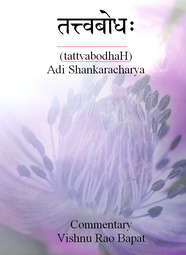A Question asked at a Social Network Group:
“Is there a room for a concept of karma within non-duality? Is karma not another concessionary concept, useful only for the mind still caught in the belief of cause and effect?
A Reply:
It is very important and valuable in Shankara Advaita to have a correct perspective on ‘karma.’
It is, however, futile to expect or to give a one word or even a one line answer to the question. To do so will be an insult to the question itself!
Your hunch that “karma is another concessionary concept, useful only for the mind still caught in the belief of cause and effect” is very true, if you consider the seeker to be no more than a distilled mass of 2-3 lbs of brain. But fortunately or unfortunately, that mass of brain always comes with many appendages and appurtenances. Those can never sit tight! Continue reading




